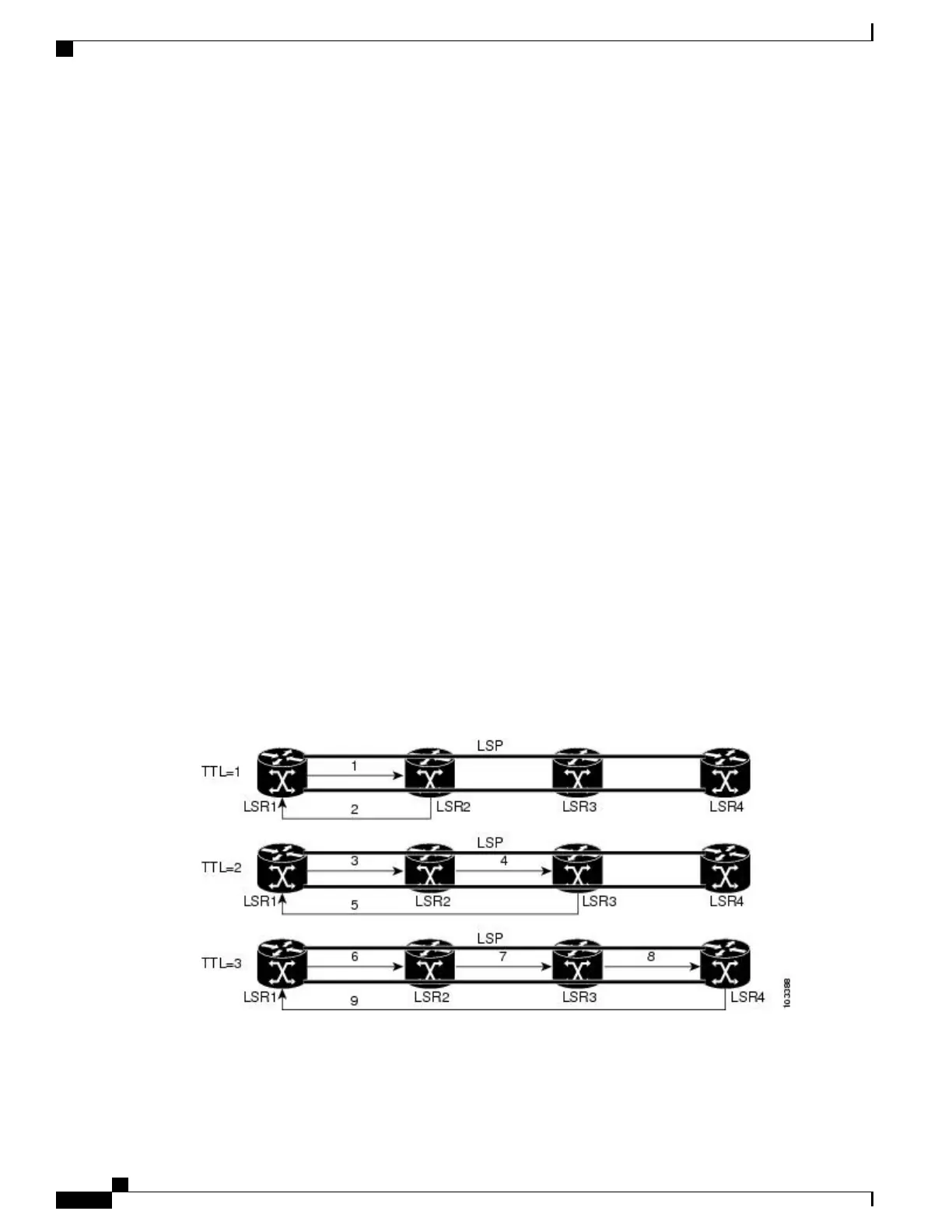You can use MPLS LSP Ping to validate IPv4 Label Distribution Protocol (LDP), Any Transport over MPLS
(AToM), and IPv4 Resource Reservation Protocol (RSVP) FECs by using appropriate keywords and arguments
with the command:
ping mpls
{ipv4
destination-address destination-mask
| pseudowire
ipv4-address
vc-id
| traffic-eng
tunnel-interface tunnel-number
}
MPLS LSP Traceroute Operation
MPLS LSP Traceroute also uses Multiprotocol Label Switching (MPLS) echo request and reply packets to
validate a label switched path (LSP). The echo request and echo reply are User Datagram Protocol (UDP)
packets with source and destination ports set to 3503.
The MPLS LSP Traceroute feature uses time-to-live (TTL) settings to force expiration of the TTL along an
LSP. MPLS LSP Traceroute incrementally increases the TTL value in its MPLS echo requests (TTL = 1, 2,
3, 4, ...) to discover the downstream mapping of each successive hop. The success of the LSP traceroute
depends on the transit device processing the MPLS echo request when it receives a labeled packet with a TTL
of 1. On Cisco devices, when the TTL expires, the packet is sent to the Route Processor (RP) for processing.
The transit device returns an MPLS echo reply containing information about the transit hop in response to
the TTL-expired MPLS packet.
The figure below shows an MPLS LSP Traceroute example with an LSP from LSR1 to LSR4.
Figure 7: MPLS LSP Traceroute Example
If you enter an LSP traceroute to a Forwarding Equivalence Class (FEC) at LSR4 from LSR1, you get the
results shown in the table below.
MPLS Basic Configuration Guide, Cisco IOS XE Everest 16.5.1 (Cisco ASR 900 Series)
66
MPLS LSP Ping, Traceroute, and AToM VCCV
MPLS LSP Traceroute Operation

